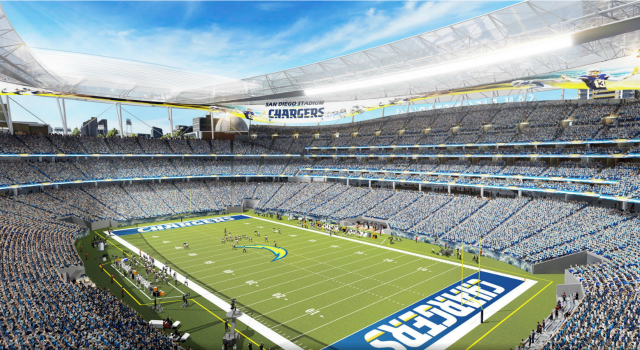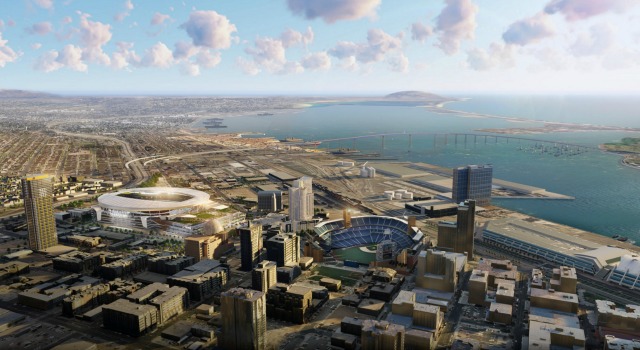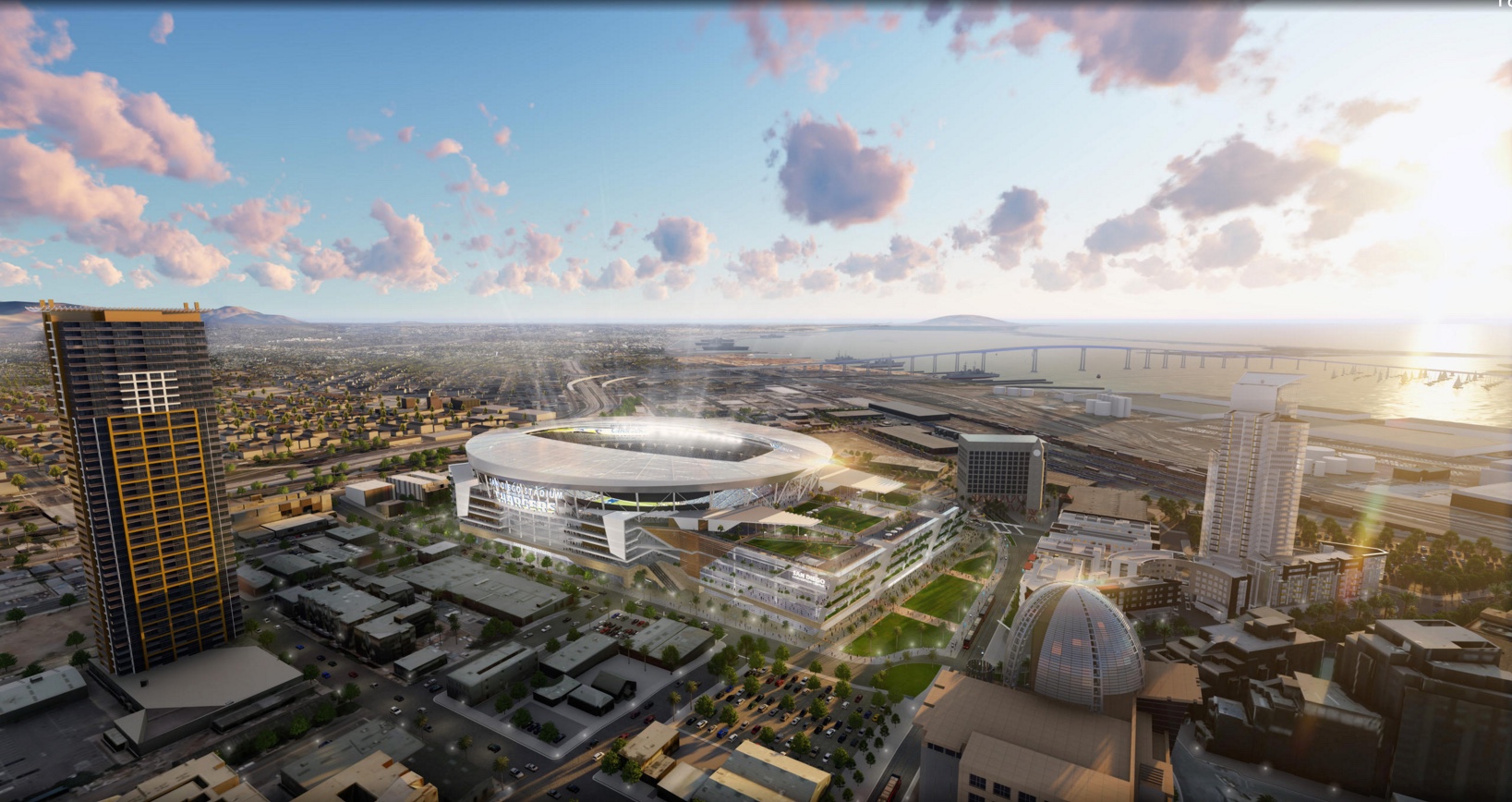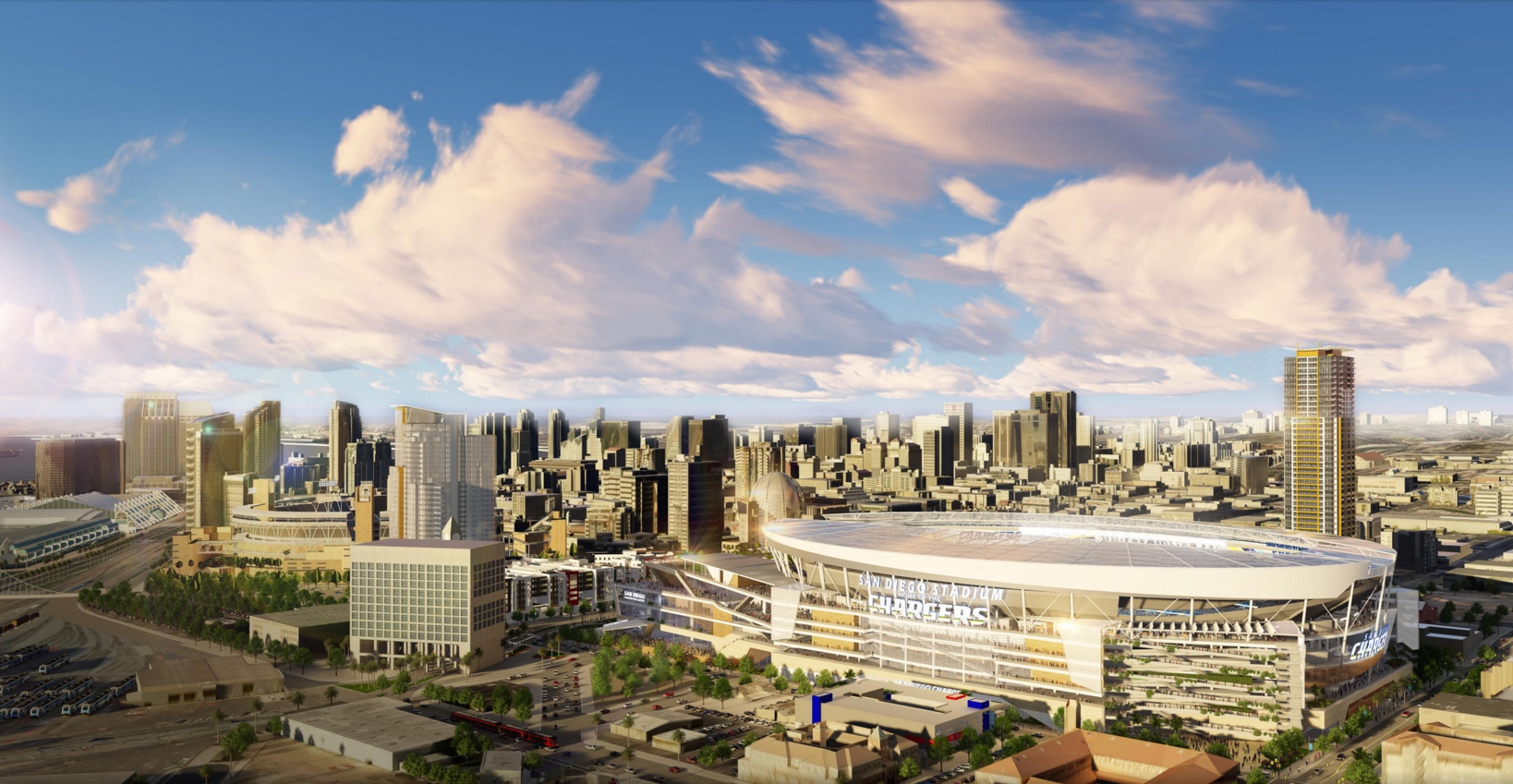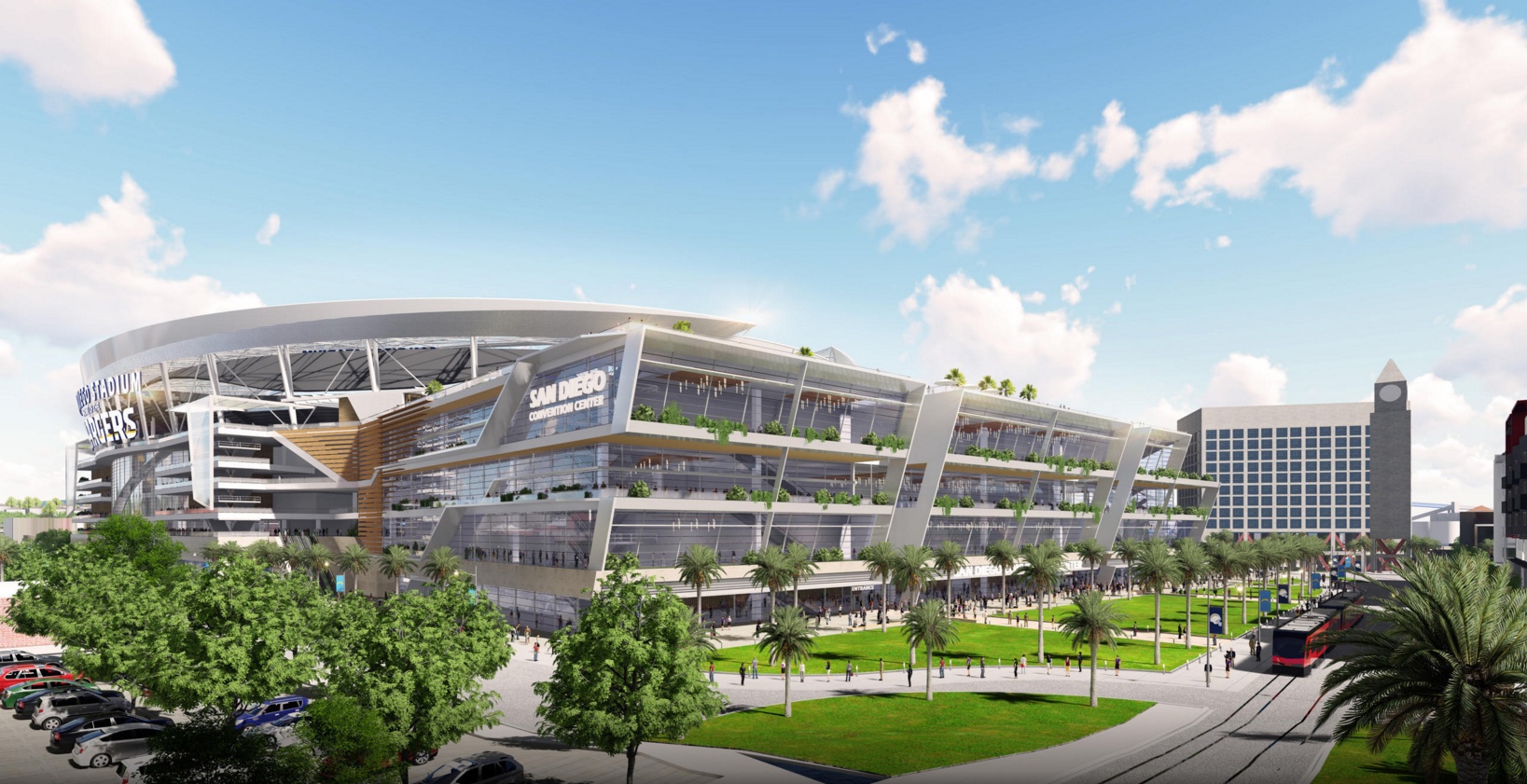Broken
Brownlow Medallist
Architect unveils glitzy design for Redskins stadium complex

Washington Redskins owner Daniel Snyder doesn’t know where the future home of his football team will be but he’s already got an idea of what he wants it to look like.
Danish architecture firm Bjarke Ingels Group, hired recently by Snyder to design a new stadium for the team, unveiled a model of the proposed project recently to “60 Minutes,” which plans to air a story on the company Sunday. The images released by the program show a semi-transparent hyperbolic paraboloid-shaped stadium surrounded by a moat for kayakers.
“When I started studying architecture people would say, you know, ‘Can you tell me why all modern buildings are so boring?’…People had this idea that in the good old days architecture had…ornament and little towers and spires and gargoyles and today, it just becomes very practical,” said Ingels, in a statement released by the show.
“The stadium is designed as much for the tailgating, like the pre-game, as for the game itself,” Ingels said on the show. “Tailgating literally becomes a picnic in a park. It can actually make the stadium a more lively destination throughout the year without ruining the turf for the football game.”
The model’s undulating roofline appears reminiscent of RFK Stadium, the venue where Snyder grew up attending games, but the new version at this point is a long way from getting built. Although elected officials from D.C., Maryland and Virginia have all expressed interest in helping Snyder build a new stadium, negotiations on where a new stadium would be located or how it would be paid for have not advanced beyond the early stages and the Redskins play at FedEx Field in Landover, Md. on a lease that expires in 2027.
Snyder has previously talked about wanting to do something innovative in terms of a new stadium. “We feel we’ve picked the best architecture firm in the world,” team spokesman Tony Wyllie said.
Building a new stadium designed by one of the buzziest names in architecture could give Snyder the opportunity to host the Super Bowl, something he has pined for since becoming owner. It would also give him a facility on par with the one his top rival, Dallas Cowboys’ owner Jerry Jones, completed in 2009. That stadium, designed by HKS Inc., has a retractable roof and one of the largest high-definition video screens in the world.
Although it has not designed an NFL stadium previously, Bjarke Ingels Group has become one of the hottest names in architecture. The firm made headlines last year when it was selected to design Google’s futuristic greenhouse-style headquarters campus in Mountain View, Calif. Locally the firm is working with the Smithsonian on a 20-year master plan for museums on the National Mall and has held a number of exhibitions at the National Building Museum, including a life-size maze it created in the museum’s great hall.
Virginia Gov. Terry McAuliffe and a state senator have been trying to drum up support in Richmond for legislation to facilitate building a new stadium, but opted against filing a bill this year.
The proposal would have expanded the purview of the Virginia Baseball Stadium Authority, created in 1992 to lure a Major League Baseball team to the commonwealth, for the construction of a new NFL stadium, presumably in Northern Virginia.
D.C. Mayor Muriel E. Bowser has also made entreaties to the team despite the fact that she considers its name to be offensive. Many Native American groups consider the term a racist slur, but Snyder has steadfastly defended it.
BIG, as the firm is known, has come under scrutiny for working on behalf of the Redskins because of the team’s controversial name. Previously it was criticized for agreeing to build a library for Kazakhstan, a project the firm no longer plans.
Ingels said in an email to The Washington Post in January that he was “proud to be part of imagining and designing the framework for the future of American Football.”
“Does the typical NFL stadium have room for improvement?” wrote Ingels. “Yes most certainly. Is it waste of resources to have giant facilities that are only active 10 times a year. Obviously. Therefore we have worked with our team to imagine a facility that can be active both inside and outside all year and all week — not just on a game day. Also we have sought to distill the stadium experience — before, during and after the game — to its essential ingredients — to provide the greatest intimacy for the players and fans, and in doing so to create a more compact and efficient stadium as opposed to the colossal facilities of the past.”

Washington Redskins owner Daniel Snyder doesn’t know where the future home of his football team will be but he’s already got an idea of what he wants it to look like.
Danish architecture firm Bjarke Ingels Group, hired recently by Snyder to design a new stadium for the team, unveiled a model of the proposed project recently to “60 Minutes,” which plans to air a story on the company Sunday. The images released by the program show a semi-transparent hyperbolic paraboloid-shaped stadium surrounded by a moat for kayakers.
“When I started studying architecture people would say, you know, ‘Can you tell me why all modern buildings are so boring?’…People had this idea that in the good old days architecture had…ornament and little towers and spires and gargoyles and today, it just becomes very practical,” said Ingels, in a statement released by the show.
“The stadium is designed as much for the tailgating, like the pre-game, as for the game itself,” Ingels said on the show. “Tailgating literally becomes a picnic in a park. It can actually make the stadium a more lively destination throughout the year without ruining the turf for the football game.”
The model’s undulating roofline appears reminiscent of RFK Stadium, the venue where Snyder grew up attending games, but the new version at this point is a long way from getting built. Although elected officials from D.C., Maryland and Virginia have all expressed interest in helping Snyder build a new stadium, negotiations on where a new stadium would be located or how it would be paid for have not advanced beyond the early stages and the Redskins play at FedEx Field in Landover, Md. on a lease that expires in 2027.
Snyder has previously talked about wanting to do something innovative in terms of a new stadium. “We feel we’ve picked the best architecture firm in the world,” team spokesman Tony Wyllie said.
Building a new stadium designed by one of the buzziest names in architecture could give Snyder the opportunity to host the Super Bowl, something he has pined for since becoming owner. It would also give him a facility on par with the one his top rival, Dallas Cowboys’ owner Jerry Jones, completed in 2009. That stadium, designed by HKS Inc., has a retractable roof and one of the largest high-definition video screens in the world.
Although it has not designed an NFL stadium previously, Bjarke Ingels Group has become one of the hottest names in architecture. The firm made headlines last year when it was selected to design Google’s futuristic greenhouse-style headquarters campus in Mountain View, Calif. Locally the firm is working with the Smithsonian on a 20-year master plan for museums on the National Mall and has held a number of exhibitions at the National Building Museum, including a life-size maze it created in the museum’s great hall.
Virginia Gov. Terry McAuliffe and a state senator have been trying to drum up support in Richmond for legislation to facilitate building a new stadium, but opted against filing a bill this year.
The proposal would have expanded the purview of the Virginia Baseball Stadium Authority, created in 1992 to lure a Major League Baseball team to the commonwealth, for the construction of a new NFL stadium, presumably in Northern Virginia.
D.C. Mayor Muriel E. Bowser has also made entreaties to the team despite the fact that she considers its name to be offensive. Many Native American groups consider the term a racist slur, but Snyder has steadfastly defended it.
BIG, as the firm is known, has come under scrutiny for working on behalf of the Redskins because of the team’s controversial name. Previously it was criticized for agreeing to build a library for Kazakhstan, a project the firm no longer plans.
Ingels said in an email to The Washington Post in January that he was “proud to be part of imagining and designing the framework for the future of American Football.”
“Does the typical NFL stadium have room for improvement?” wrote Ingels. “Yes most certainly. Is it waste of resources to have giant facilities that are only active 10 times a year. Obviously. Therefore we have worked with our team to imagine a facility that can be active both inside and outside all year and all week — not just on a game day. Also we have sought to distill the stadium experience — before, during and after the game — to its essential ingredients — to provide the greatest intimacy for the players and fans, and in doing so to create a more compact and efficient stadium as opposed to the colossal facilities of the past.”




